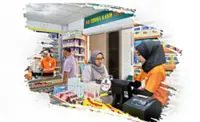IDEAS senior fellow and Universiti Putra Malaysia fellow Datin Paduka Dr Fatimah Mohamed Arshad opines Malaysia must be steadfast in implementing both technology-smart agriculture and climate-smart agriculture in order to survive in the coming decades.
THE new norms post-pandemic are arduous and challenging for Malaysia’s agriculture and food industries.
The supply chain disruption during the pandemic exposed Malaysia’s vulnerability in food security during climatic threats and market uncertainties. As in the earlier food crises — 1973-1975, 1980s, 2008, 1997/1998 and 2023-2024 — food security showed weak resilience.
Follow us on our official WhatsApp channel for breaking news alerts and key updates!
Thank you for your report!





